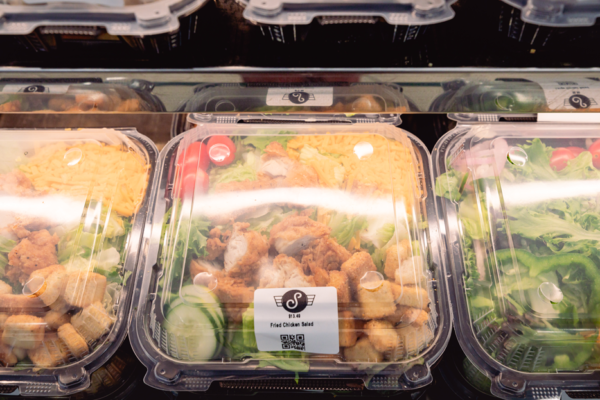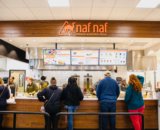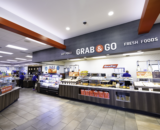Article created for the January digital issue of
Innovation plays an important role in driving sales of retailers’ core offerings, and keeping food offerings fresh and exciting can help make a location a destination and bring customers inside.
Jessica Williams, CEO of Food Forward Thinking, recommends travel center operators make a conscious effort to find new, creative offerings and roll them out throughout the year. "I have an innovation calendar for all the people I work with,” she said.
(Williams is an expert in menu planning for travel centers. She led a NATSO webinar, sharing her expertise on how to better capitalize on the untapped potential in food and beverage sales. Watch a video of the presentation here.)
Innovation Calendar as a Roadmap
The innovation calendar can act as a roadmap to guide operators as they roll out new menu items, test new products and work to boost customer satisfaction. “Think about what messaging is available in different parts of the year. Have multiple bullets that could work for that window based on what the rest of the store is doing,” Williams said.
She recommends doing something simple during periods that are operationally complex for the location.
"Make a month-to-month calendar, start adding rows in Excel and look for ideas to meet those needs,” she said. “Start looking for ideas, ask yourself what you’re starting to notice, and, within a few weeks, you’ll get some ideas.”
Look for Inspiration from Popular QSRs and from Vendors
Williams said she pays attention to what popular quick-serve and fast-casual restaurants are doing. "Brisket was everywhere for a while, and birria-inspired is a hot flavor. Do some simple R&D and have a pipeline ready,” she added.
Operators can also initiate conversations with their food vendors on high-volume products at other locations. “Ask, ‘What are the top 10 highest-volume items you supply in the cold case? Bakery? Roller grill? All categories?’ Where you have gaps, consider testing a few high-volume items to replace your lowest-volume items,” Williams said.
She added that operators can ask vendors if their locations can be test stores for new products in their most popular categories. “Oftentimes manufacturers will send free cases or provide strong incentives to test market new products,” she said. “Test like you will launch. If you can market new items through an app, with a sign, or otherwise, note what exactly is driving sales, and take steps to make sure the large-scale rollout matches the test.”
Replace Old Equipment
Replacing old equipment with upgraded technology can open the door to new menu items. "For example, replacing microwaves in a food preparation area with speed ovens can allow for toasting bread, cooking from frozen and increasing the speed of service," Williams said.
Menu Management
To help keep food offerings manageable, Williams said operators should consistently review each category, subcategory, and location to determine which products contribute the most units, sales dollars, labor and waste. “If you can tighten up the menu and get rid of items you don't have to order frequently or if you notice that waste is high on something, that is a way to eliminate cost from your store and simplify operations,” she said.
Most menus are too broad, and there may be opportunities to permanently downsize the menu to top-selling core items that are consistently available. “Use the 80/20 rule and determine which 20% of items are contributing the most in units, sales and margin. Organize the menu or food display that smartly encourages customers to select items you most want to sell and eliminate items that do not earn their place on the menu,” she said.
Cross-utilizing ingredients can also help simplify menus and minimize waste. "Are you using menu items for more than one product? If not, they probably need to go,” Williams said.
Market the Most Popular Items
It is also a best practice to prioritize marketing the most popular items, especially when they have a strong margin and are simplest operationally. “Essentially, tell your customers what you want them to buy, and make it easy for store teams to deliver with quality and excellence,” Williams explained.
When creating an innovation calendar, Williams recommends that operators develop a vision of how they want their menu to evolve and work backward from there. "You need to choose and lane and think, ‘How can I make my menu the most unique and differentiated?’ Set your goals and priorities and then build to it,” she said.
// This article was created for Stop Watch magazine, the magazine of the NATSO Foundation. The NATSO Foundation is the research, education and public outreach subsidiary of NATSO, Inc. The NATSO Foundation provides programs and products to strengthen travel plazas’ ability to meet the traveling public's needs through improved operational performance and business planning. Visit www.natsofoundation.org for more information. (Donate to the NATSO Foundation here.)
Subscribe to Updates
NATSO provides a breadth of information created to strengthen travel plazas’ ability to meet the needs of the travelling public in an age of disruption. This includes knowledge filled blog posts, articles and publications. If you would like to receive a digest of blog post and articles directly in your inbox, please provide your name, email and the frequency of the updates you want to receive the email digest.




